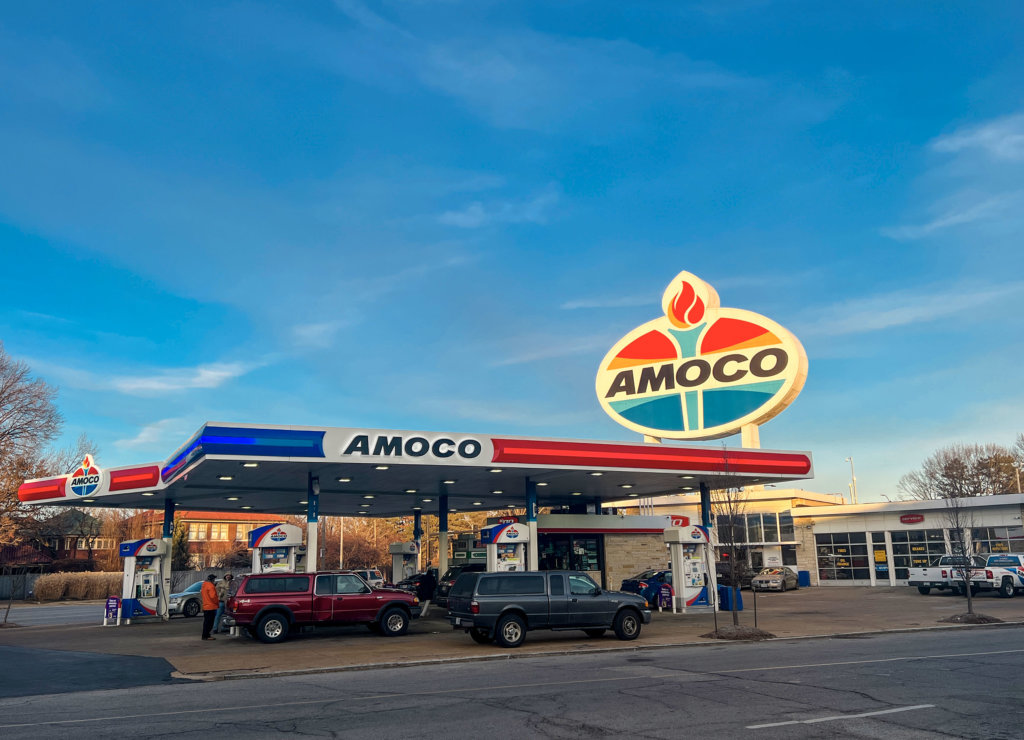
If you have ever taken a lap around Forest Park or driven west on highway 64 past the park, you have seen it: the world’s largest AMOCO sign.
After a lifetime of adaptations, this St. Louis icon has become an archetype of persistence and evolution.
Long before the AMOCO name, the same gas was produced by a subsidiary of John D. Rockefeller’s infamous Standard Oil, called Standard Oil (Indiana). The triangle-shaped lot at Skinker Boulevard and Clayton Road was purchased by Standard in 1921 and the first giant double-sided Standard Oil sign was constructed.[1]
In 1926, a service station came along to accompany the sign. In the early 30s, Standard Red Crown Automotive Repair scrapped the original sign and built a new one on the roof where it could catch more eyes. In addition to the 5800 bulbs that lit the 44 tons of steel, it was outfitted with 2900 feet of neon tubing and 5 miles of wiring. [2]
In the 1950s, the station changed ownership and the building and sign were torn down and fully reconstructed. To match mid-century design trends, the red-white-and-blue Standard sign was fitted with a plastic face.
In 1961, Standard Oil (Indiana)’s domestic operations unified as the American Oil Company, nicknamed AMOCO, a sort of acronym. In 1985, the company officially adopted the nickname, and within a few years, the rebrand hit St. Louis. The 40-by-60-foot sign read “AMOCO” for the first time.
The oil goliath BP (British Petroleum) acquired AMOCO in 1998 to become BP AMOCO in one of the largest corporate mergers in world history. In the early 2000s, BP AMOCO became simply “bp” and another rebrand swept the states.
Where AMOCO had once been synonymous with gas in America, bp’s green-and-yellow sunburst took over. Despite the rebrand, however, the world’s largest AMOCO sign stayed put atop a bp station thanks to St. Louis’ attachment to it.
The newest iteration of the sign came with bp’s reintroduction of the AMOCO brand in 2017. Two years later, the giant sign had its colors refreshed and lights replaced with more environmentally friendly LED spotlights. This 2019 edition is the sign you can see today.

2022
Like many landmarks across St. Louis, a first look begs the question: why is that here? In this case, no one set out to build the World’s Largest anything. But they did, and it’s been a fixture for nearly a century. Like the city of St. Louis, the sign’s identity evolves with each passing decade. The lights, the colors, and the words may change, but it’s always been there to catch the eyes of passersby.
References
[1] https://www.vamonde.com/posts/worlds-largest-amoco-sign/7502
[2] https://www.stlmag.com/history/st-louis-sage/what-s-up-with-that-giant-amoco-sign%E2%80%94on-a-bp/